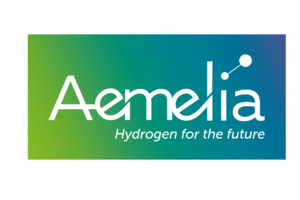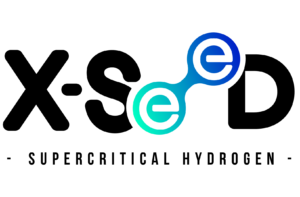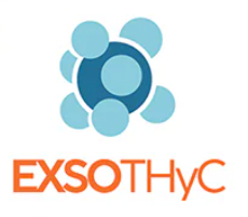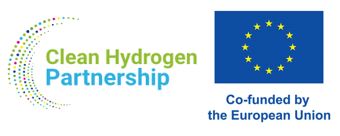Cluster of projects
Cluster - linked projects
The REDHy project will cluster their activities with the other projects granted in the same call. The aim of the clustering is to align the communication and dissemination activities among the projects.
The following projects are linked to each other through the cluster.
AEMELIA
Anionic Exchange Membrane water ELectrolysis for highLY efficiency sustAinable, and clean Hydrogen production
 AEMELIA accepts the challenge to design and prototype AEMEL that meets and surpasses Hydrogen Europe’s 2030 targets for performance, durability, safety and cost. AEMELIA proposes a clear path to reach high current-density (1.5 A cm-2) and low voltage (1.75 V). Energy-efficiency surpasses the 2030 target (46.9 kWh/kg, or 85% of maximum theoretical efficiency), to make 3 times more H2 with less energy compared to XY. LCOH also outshines 2030 targets at 2.5€/kgH2 (17% lower than 2030 target). The degradation rate meets the 2030 target, enabling a 10-year lifetime. These and other KPIs will be validated via the TRL4 prototype of a 5-cell stack at 100 cm² that will deliver 7.2 Nm3/day of H2 at a purity of 99.9% at 15 bar.
AEMELIA accepts the challenge to design and prototype AEMEL that meets and surpasses Hydrogen Europe’s 2030 targets for performance, durability, safety and cost. AEMELIA proposes a clear path to reach high current-density (1.5 A cm-2) and low voltage (1.75 V). Energy-efficiency surpasses the 2030 target (46.9 kWh/kg, or 85% of maximum theoretical efficiency), to make 3 times more H2 with less energy compared to XY. LCOH also outshines 2030 targets at 2.5€/kgH2 (17% lower than 2030 target). The degradation rate meets the 2030 target, enabling a 10-year lifetime. These and other KPIs will be validated via the TRL4 prototype of a 5-cell stack at 100 cm² that will deliver 7.2 Nm3/day of H2 at a purity of 99.9% at 15 bar.
The team will develop and test disruptive materials, such as fluorine-free ionomers ; thin, highly-conducting membranes ; PGM-free recombination catalysts ; and ionomer-free electrodes. These components are based on earth-abundant, safe materials. They would be fully scalable via existing manufacturing processes. They will be combined in innovate cell designs, taking into account novel flow-field design based on CFD models. Innovative operating conditions such as high operating temperature and pulsed current will increase energy-efficiency while reducing balance of plant (BoP) and will be tested in single cells, as will the use of impure water for improved LCA and cost. Lastly, disruptive methods for AI-based ionomer development and the measurement of the catalytically-active surface area of non-PGM catalysts will be developed.
Performance, durability, LCA and cost KPIs will be shared with companies to convince them to invest in upscaling after the project. Partners have many success stories in developing disruptive electrochemical materials and systems and bringing them to market. AEMELIA’s market penetration in 2031 is expected to generate 527 M€ in revenues by 2036, and 1172 kt CO2/year avoided compared to steam methane reforming.
X-SEED
eXperimental Supercritical ElEctrolyser Development
 X-SEED is developing an innovative membrane-less electrolyzer that operates under supercritical water conditions (>374°C; >220 bar) to produce high-quality hydrogen at pressures over 200 bar. This technology maximizes energy efficiency, improves circularity, and extends the system’s lifespan, making green H2 production more competitive.
X-SEED is developing an innovative membrane-less electrolyzer that operates under supercritical water conditions (>374°C; >220 bar) to produce high-quality hydrogen at pressures over 200 bar. This technology maximizes energy efficiency, improves circularity, and extends the system’s lifespan, making green H2 production more competitive.
Results will be validated at the laboratory scale for a single cell and a 5-cell stack. High efficiency will be ensured by novel catalysts and electrodes. Thanks to the membrane-less design and supercritical conditions the electrochemical work needed to generate H2 is reduced and the system’s lifespan is increased. This results in better voltage and energy efficiency (42 kWh/kg H2), high current density (> 3 A/cm2), and improved H2 production rate and durability (degradation rate < 1%/1000h).
SEAL-HYDROGEN
Stable and Efficient Alkaline Water Electrolyzers With Zero Critical Raw Materials for Pure Hydrogen Production
The EU has set a target of installing at least 40 GW of renewable H2 electrolysers by 2030 as part of its Hydrogen Strategy. However, achieving this goal poses significant challenges for water-electrolysis technology. The current zero-gap alkaline water electrolysis (AWE) has the potential to be cost-effective and scalable, but it requires further optimisation in activity, stability, and gas crossover to increase efficiency and system lifetime. The EU-funded SEAL-HYDROGEN project aims to create a new AWE system that combines classic benefits with advanced innovations. The project proposes using sustainable, cost-effective, two-dimensional, layered double hydroxides (LDH) instead of noble metal-based catalysts. Its objective is to accelerate the commercial uptake of water electrolysis.
EXSOTHyC
Exsolution-Based Nanoparticles for Lowest Cost of Green Hydrogen via Electrolysis
 Today’s alkaline electrolysers favour current densities over efficiency: to achieve commercially relevant current densities, these systems typically operate at voltages exceeding 2 V/cell, corresponding to electrolyser power consumption of >54 kWh/kg. There are four reasons for employing high voltages: 1) electrodes’ insufficient electrochemical activity, 2) the relatively high gas permeability of commonly employed diaphragms means that improved hydrogen purity can be achieved at high current operation points, 3) the stack designs are not optimised for low-current operation due to very simple flow fields, and 4) high currents are required to achieve attractive electrolyser CAPEX costs (EUR/kW).
Today’s alkaline electrolysers favour current densities over efficiency: to achieve commercially relevant current densities, these systems typically operate at voltages exceeding 2 V/cell, corresponding to electrolyser power consumption of >54 kWh/kg. There are four reasons for employing high voltages: 1) electrodes’ insufficient electrochemical activity, 2) the relatively high gas permeability of commonly employed diaphragms means that improved hydrogen purity can be achieved at high current operation points, 3) the stack designs are not optimised for low-current operation due to very simple flow fields, and 4) high currents are required to achieve attractive electrolyser CAPEX costs (EUR/kW).
Yet, there is a growing consensus that the wider adoption of green H2 is not hindered by electrolyser CAPEX: the costs of green H2 are in most cases vastly dominated by OPEX, which in turn is a direct function of electrolyser efficiency. Thus, to achieve lowest possible levelised cost of H2, efficiency should be prioritised over current density.
EXSOTHyC will optimise electrolyser operation towards lower voltages and higher efficiencies. The innovation is three-fold and addressing all four above-mentioned reasons:
• Alternative pathways to the O2 and H2 evolution reactions by new anode and cathode approaches
• Novel concepts of membrane electrode assemblies with integrated components
• Novel cell design to enhance overall cell efficiency by integrating disruptive concepts
In the project, we adopt an approach combining computer simulations, rapid prototyping, and thorough experimental validation on single cell, SRU and short stack level. In a nutshell, we will combine electrodes made using powder metallurgy with ceramic nanoparticles fabricated by exsolution, leveraging on the synergy that both methods require reducing atmospheres. Also, membrane-electrode assemblies based on Zirfon will be developed. The cell/stack will be backed by computer modelling.


